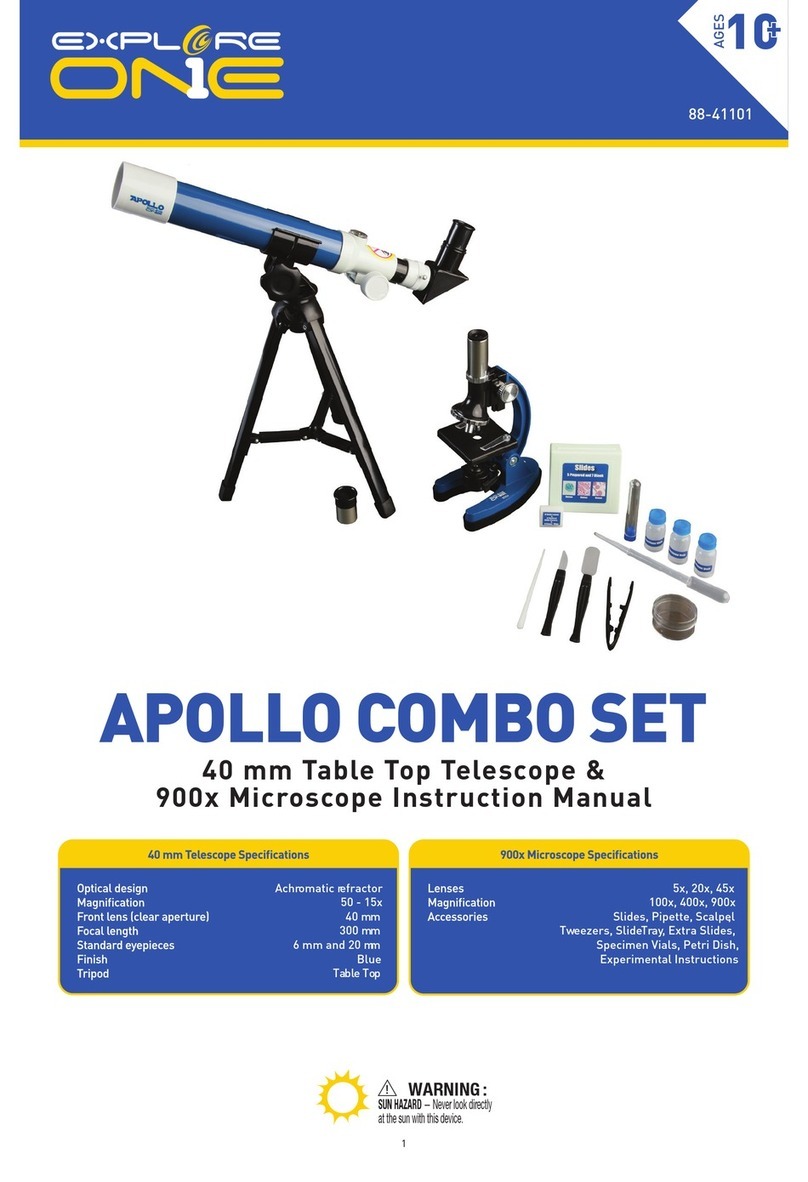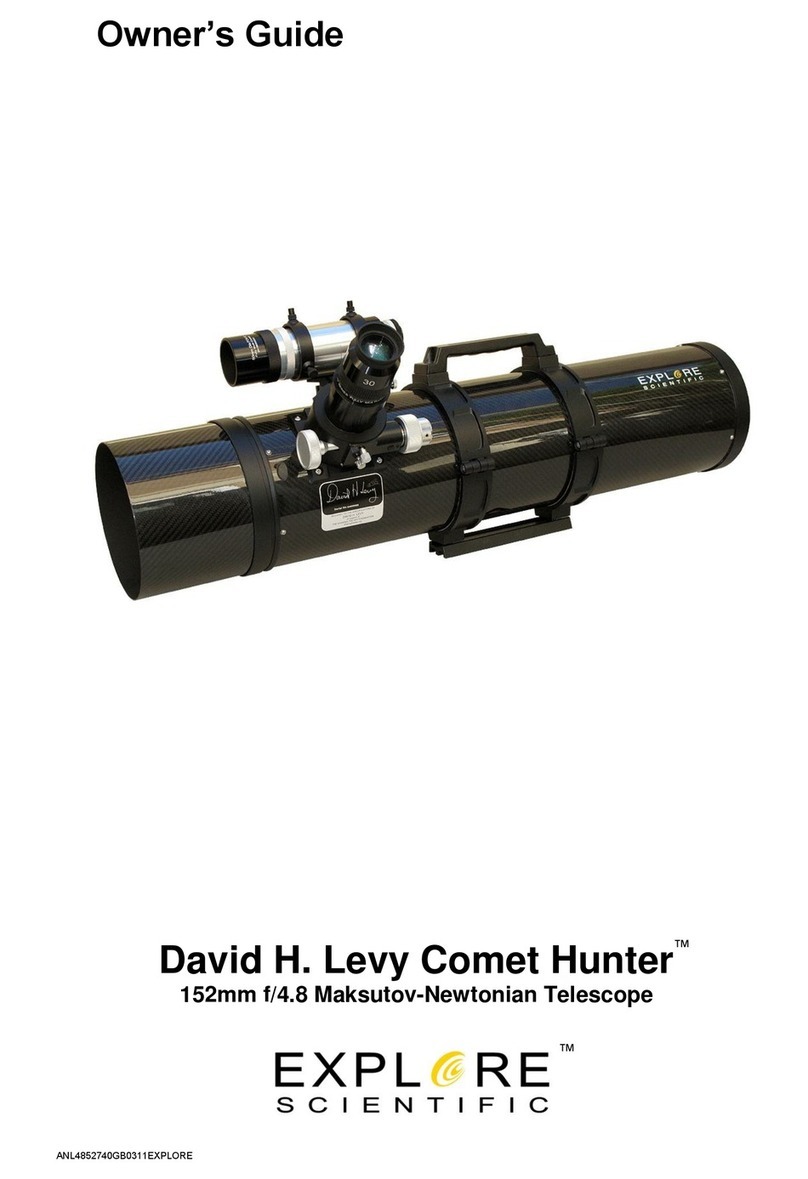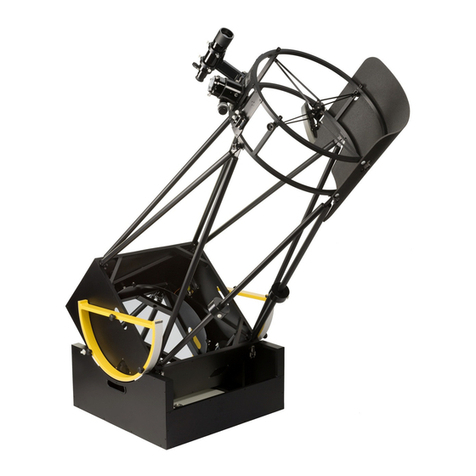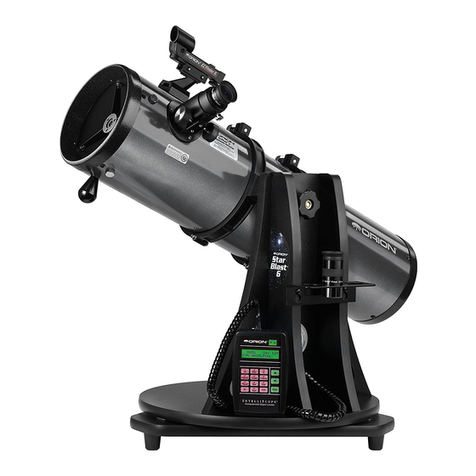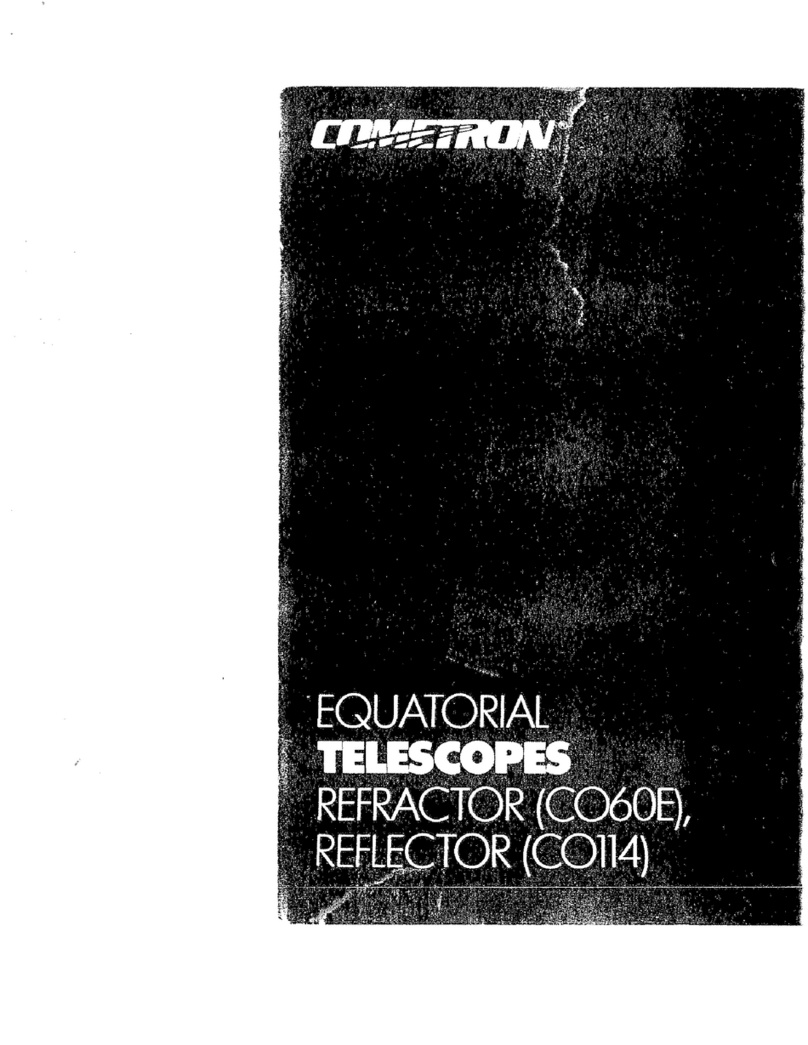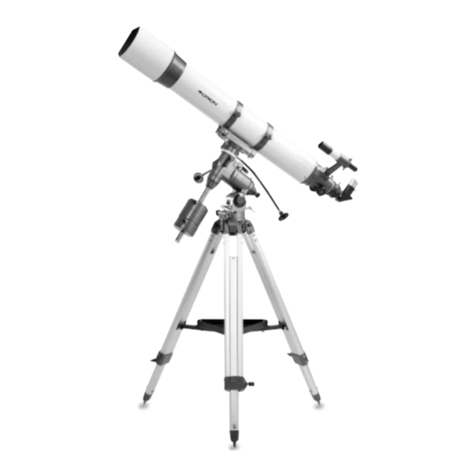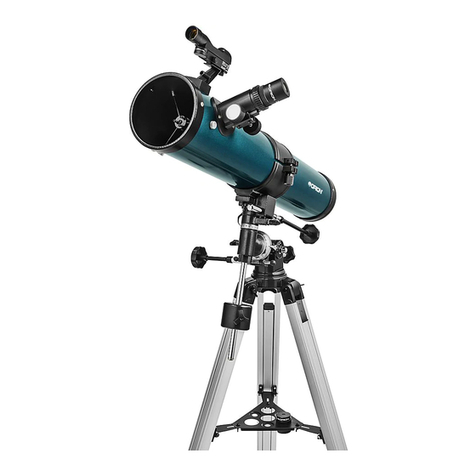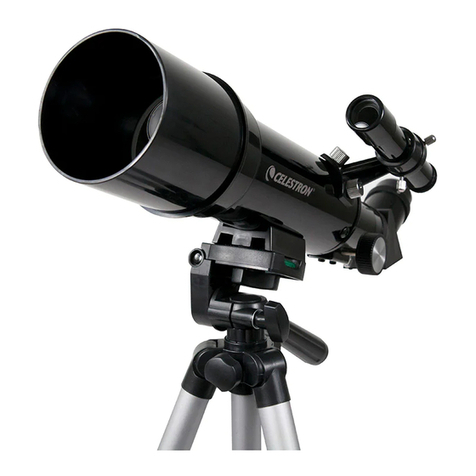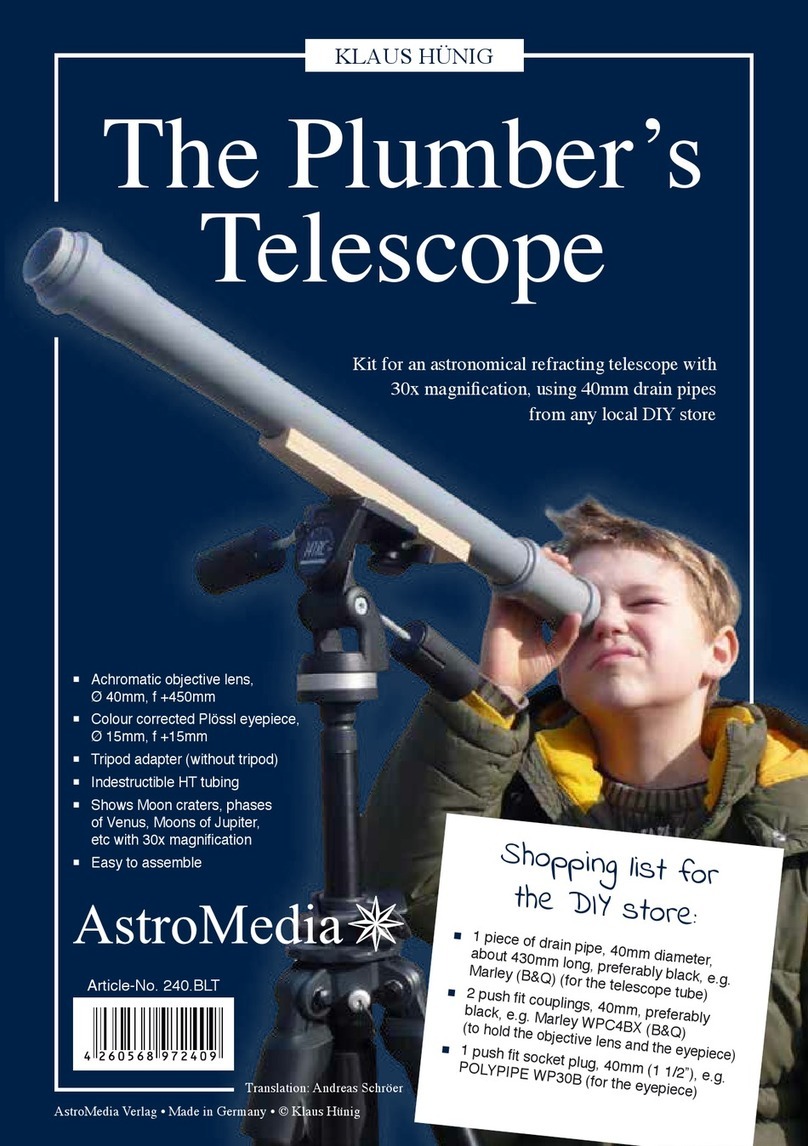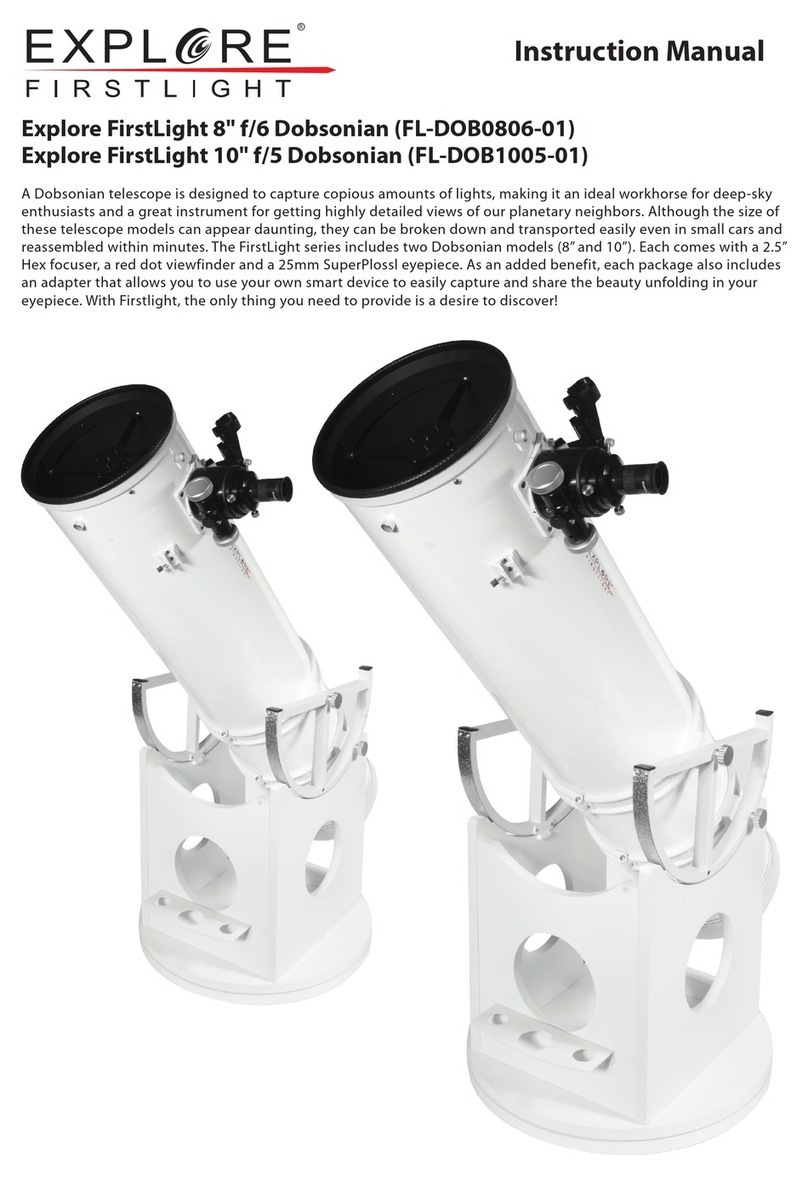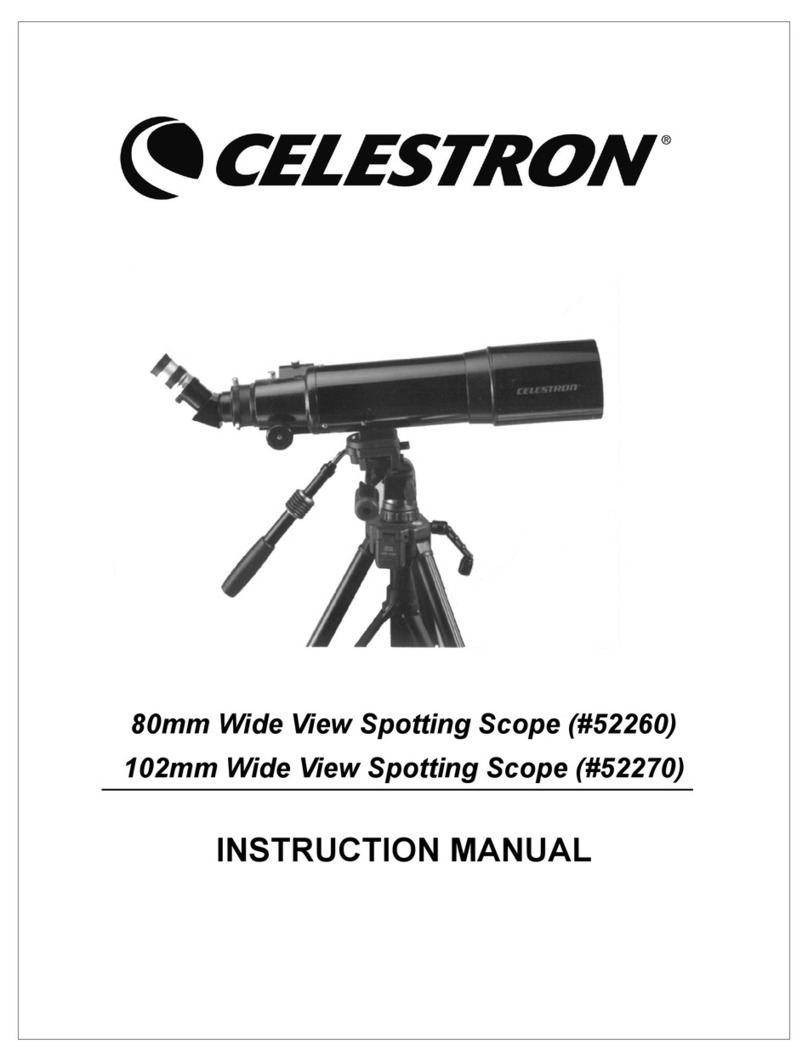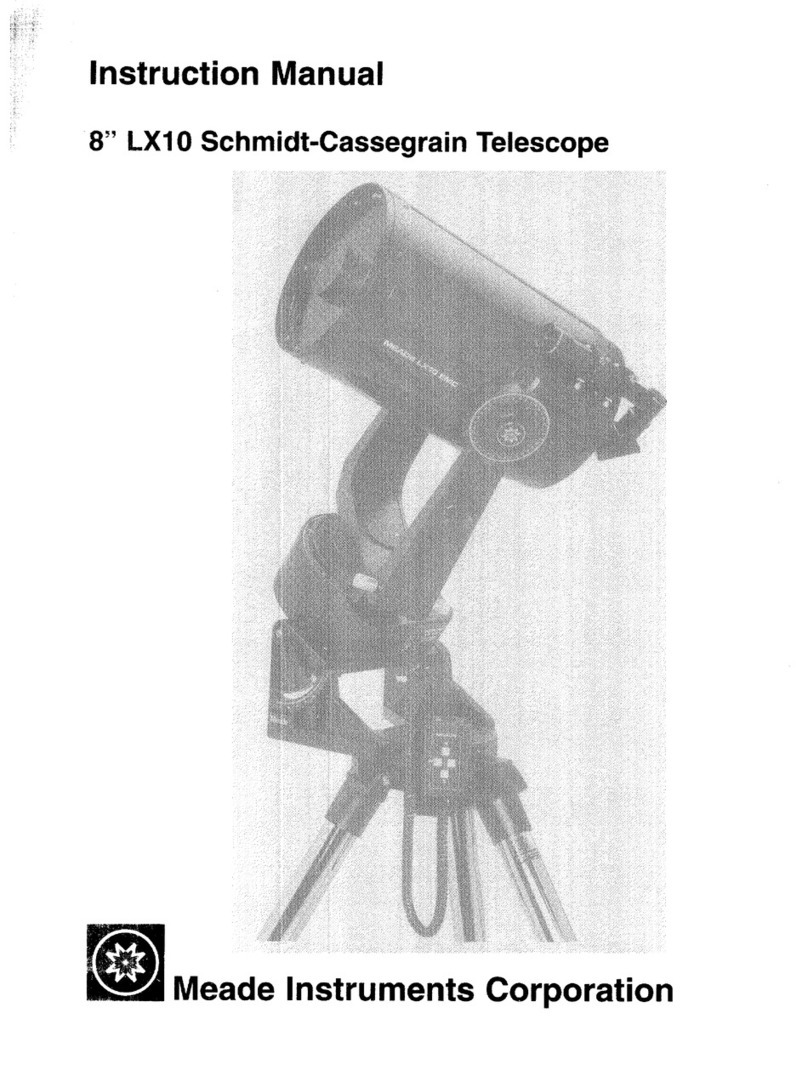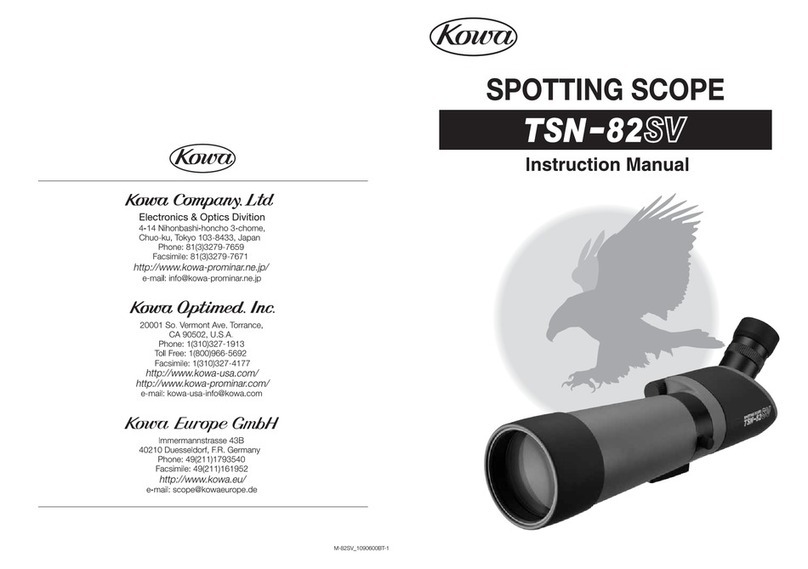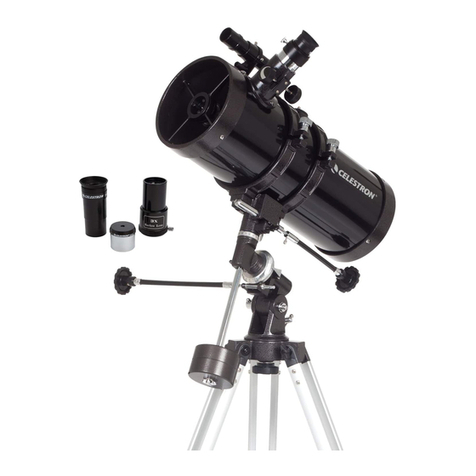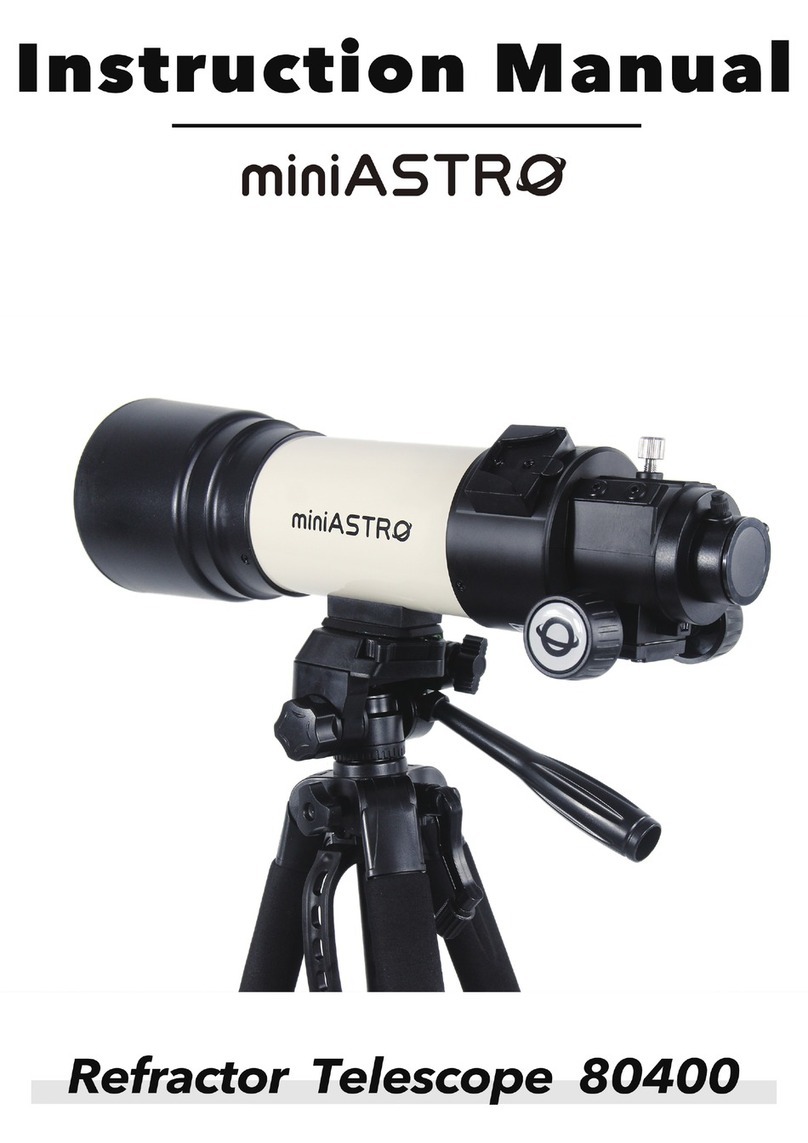
- 19 -
Use
V
Observation
Allow for a temperature adjustment for about 90 minutes before starting an observation.
Because when bringing the telecope e.g. from a heated car or house to a place outside so
called tube seeing may occur. This means that the primary mirror is warmer than the air and
will produce air turbulence.
After the temperature adjustment the telecope will produce a sharp image.
Try out your telescope during the daytime at first. It is easier to learn how it operates and how
to observe when it is light.
Pick out an easy object to observe: A distant mountain, a lighthouse or something else. Point
the optical tube so it lines up with the object.
Look through the LED viewfinder until you can see the object.
Once you have the object lined up in the finder, it should also be visible in the optical tube’s
26 mm eyepiece.
Look through the eyepiece and start focusing on the object you have chosen.
When you feel comfortable with the finder, the eyepieces, the locks and the adjustment controls,
you will be ready to try out the telescope at night. The Moon is the best object to observe the
first time you go out at night. Pick a night when the Moon is a crescent. No shadows are seen
during a full Moon, making it appear flat and uninteresting.
Use a neutral density filter (sometimes called a “moon filter”) when observing the Moon. Neutral
density filters are available from your local dealer as an optional accessory.
Spend several nights observing the Moon. Some nights, the Moon is so bright that it makes
other objects in the sky difficult to see. These are nights that are excellent for lunar observation.
The most obvious features are craters. The dark areas on the Moon are called maria and are
composed of lava from the period when the Moon still had volcanic activity. You can also see
mountain ranges and fault lines on the Moon.
Planets
During their orbit around the sun the planets are continuously changing their position on the
sky. You can find the actual position of the planets in astronomy circulars and soon on the
information center of the Explore Scientific homepage. The following planets are especially
suited for observations with your telescope:
Venus
The diameter of Venus is about 9/10 the diameter of the Earth. When Venus is orbiting the
sun the astronomer can observe the change of the light phases of Venus during this orbit:
Crescent, half Venus, full Venus – very much like the phases of the moon. The planetary disc of
Venus appears white because the sunlight is reflected by a compact layer of clouds that covers
all surface details. Venus is only visible before dawn and shortly after dusk in the vicinity of the
sun, so be careful not to look into the sun.
Mars
The diameter of Mars is about half the Earth's diameter. In a telescope Mars appears as a tiny
red-orange disk. Maybe you will see a tiny white patch when you look at the polar regions that
are covered in ice. About every two years, when Mars and Earth reach their smallest distance
you can discover new features.
Jupiter
The biggest planet in our solar system is Jupiter with about 11 times bigger equatorial diameter
than the Earth. The Planet appears as a disk that is covered in dark lines. Those lines are
cloud bands in the atmosphere of Jupiter. Even with low magnification 4 of the 67 moons of
Jupiter are visible – the so called Galilean moons (Io, Ganymed, Europa and Callisto). Because
those moons are orbiting Jupiter the visible number and position changes. Sometimes a moon
passes above the planetary disc of Jupiter – then the shadow of the moon can be spotted on
the planet as a sharp dark spot.
Saturn
Saturn has a diameter about 9 times the Earth's diameter and appears as small roundish disc.
You can see the rings of Saturn on both sides of the planetary disc. Galilei, who was the first
Fig. 17: Craters of the moon are excellent targets to
observe even for beginners.
Fig. 18: Planet Venus in its thin crescent phase
Fig. 19: Jupiter's four largest moons can be observed in a
different position every night.






















